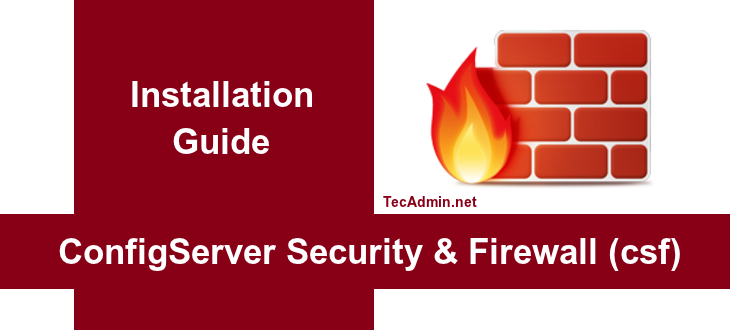Red Hat 8.0 beta is released now. This version is based on Fedora 28 and the upstream kernel 4.18 provides users with a stable, secure, consistent foundation. The default package manager Yum is now based on dnf to support modular content. There are many more updates available in this release. Also, many of new features have been added by the RHEL team. To read details information about changes in this release visit redhat.com official blog.
Author: Rahul
As you develop your project in Git, you may end up with a lot of untracked files in your local repository. These files can clutter up your repository and make it harder to manage. In this article, we’ll discuss how to remove untracked files from your Git repository. What are Untracked Files? Untracked files are files in your local repository that Git is not currently tracking. These files can be created by various tools, such as text editors or build tools, and may not be necessary for the project. Untracked files can be safely removed from your repository without affecting…
FFmpeg is a cross-platform solution for streaming audio and video as well as recording and conversion. Its also useful to convert multimedia files between various formats. FFmpeg includes libavcodec audio/video codec library in it. This article will describe you to how to install FFmpeg on CentOS , RHEL 7/6/5 and Fedora systems with easy steps. Also provides basic uses of ffmpeg. CentOS/RHEL uses must have enable atrpms rpm repository on his systems. 1. Install FFmpeg CentOS/RHEL and Fedora users make sure that you have enabled atrpms repository in system. Let’s begin installing FFmpeg as per your operating system. # yum…
FFmpeg is a cross-platform solution for streaming audio and video as well as recording and conversion. It’s also useful to convert multimedia files between various formats. FFmpeg includes libavcodec audio/video codec library in it. This tutorial will help you to install FFmpeg on Ubuntu 18.04 LTS & 16.04 LTS systems with easy steps. Step 1 – Setup FFmpeg PPA FFmpeg 4 is the latest available version for installation on Ubuntu. To install the latest version, you need to configure PPA on your system. Execute below command to add FFmpeg PPA on Ubuntu system. sudo add-apt-repository ppa:jonathonf/ffmpeg-4 This PPA contains packages…
ConfigServer Security & Firewall (CSF) is a popular and powerful firewall solution for Linux servers. It provides a user-friendly interface and a wide range of security features to protect your server from various threats. In this article, we will guide you through the process of installing and configuring CSF on your Linux server. Step 1: Prerequisites Before installing CSF, ensure that your server meets the following prerequisites: A Linux server running CentOS, Debian, Ubuntu, or any other compatible Linux distribution. Root access or a user account with sudo privileges. Perl installed on your server. If Perl is not installed, you…
PHP Composer is a dependency manager for PHP, facilitating the installation and management of PHP packages. It’s essential for modern PHP development. This article guides you through installing and using PHP Composer on CentOS/RHEL 9/8. Prerequisites A CentOS/RHEL 9/8 system Command-line access with sudo privileges Basic knowledge of PHP and Linux commands Step 1: Installing PHP Before installing Composer, ensure PHP is installed. Use the following command to install PHP: sudo dnf install php php-cli php-json Step 2: Downloading Composer You can download Composer using curl. First, ensure curl is installed: sudo dnf install curl Then, download the Composer installer…
In the world of version control, mistakes are a given. You may make an unintended change, commit too soon, or simply want to revert to a previous state of your codebase. Fortunately, Git provides mechanisms to correct such mistakes. One common task is rolling back the most recent commit. This article will guide you through this process step-by-step. 1. Understanding the Basics Before diving in, it’s essential to understand a couple of fundamental Git concepts: Commit: A snapshot of changes made in the codebase. Each commit has a unique ID (hash) associated with it. HEAD: A pointer that refers to…
ImageMagick is a software suite to create, edit, compose, or convert bitmap images. It can read and write images in a variety of formats like GIF, JPEG, PNG, Postscript, and TIFF. We can also use ImageMagick to resize, flip, mirror, rotate, distort, shear and transform images, adjust image colors, apply various special effects, or draw text, lines, polygons, ellipses and Bézier curves. ImageMagick is typically used from command line. Also we can use it from any programming language by using its interface like Magick.NET (.Net),IMagick (PHP), PerlMagick (Perl) etc. This article will help you to install ImageMagick on CentOS, RHEL…
ImageMagick is a software suite to create, edit, compose, or convert bitmap images. It can read and write images in a variety of formats like GIF, JPEG, PNG, Postscript, and TIFF. We can also use ImageMagick to resize, flip, mirror, rotate, distort, shear and transform images, adjust image colors, apply various special effects, or draw text, lines, polygons, ellipses and Bézier curves. This article will help you to install ImageMagick on 19.04, 18.04 & 16.04 LTS operating systems. Step 1 – Prerequsities First of all, You need to install the required packages in order to install ImageMagick and Imagick PHP…
Virtual Hosting allows multiple domains or websites to operate on a single server. It’s especially useful in shared hosting environments, where one server hosts thousands of websites, all sharing its resources. This guide will demonstrate how to set up Virtual Hosts on an Apache2 server for Ubuntu, Debian, and LinuxMint systems. For those interested in a similar setup with Nginx on Ubuntu, you can refer to “Set Up Virtual Hosts in Nginx on Ubuntu.” Step 1: Installing Apache If Apache is not already installed on your system, you can install it using the following commands. Remember to update your repositories…

